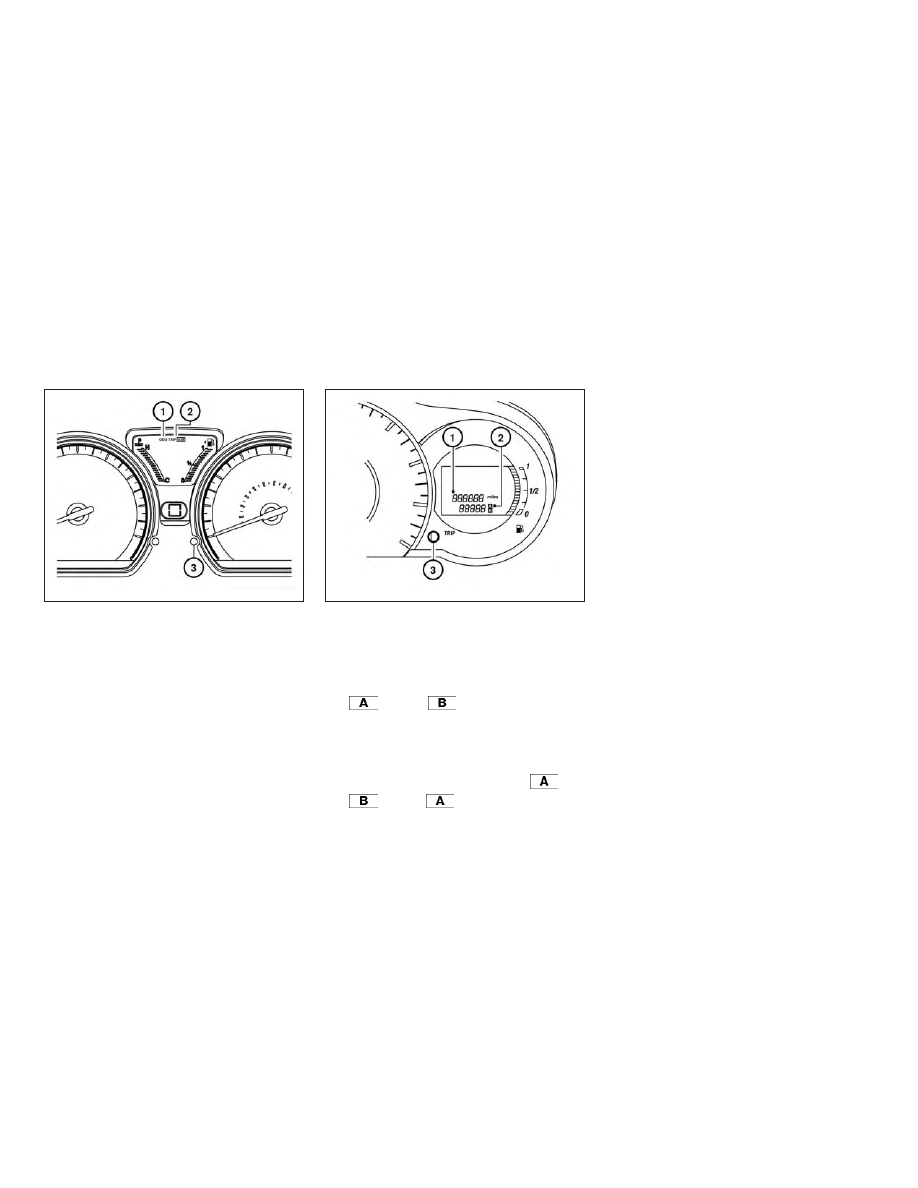Nissan Versa Note (2019 year). Instruction - part 6

Odometer/Twin trip odometer
The odometer/twin trip odometer is dis-
played when the ignition switch is placed in
the ON position.
The odometer
䊊
1
records the total dis-
tance the vehicle has been driven.
The twin trip odometer
䊊
2
records the dis-
tance of individual trips.
Changing the display
Press the change button
䊊
3
to change the
display as follows:
Type A (if so equipped) : Odometer (ODO)
→
Trip
→ Trip
→ Instant fuel con-
sumption
→ Average fuel consumption →
DTE (cruising range)
→ Outside Air Tem-
perature (if so equipped)
→ Odometer
(ODO)
Type B (if so equipped) : Trip
→
Trip
→ Trip
Resetting the trip odometer
Press the change/reset button
䊊
3
for more
than 1 second to reset the currently dis-
played trip odometer to zero.
Type A (if so equipped)
LIC2139
Type B (if so equipped)
LIC2758
2-6
Instruments and controls